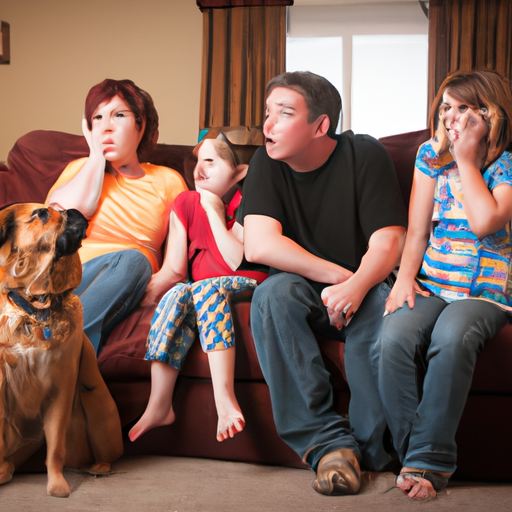Understanding Your Dog’s Behavior
Dogs, like humans, have their own unique personalities, preferences, and even prejudices. If your dog is growling at a specific family member, it’s essential to understand that this isn’t random or irrational behavior. Your dog is communicating something important.
Understanding your dog’s behavior can involve:
- Observing the context in which the growling occurs
- Identifying any potential triggers
- Recognizing the signs of fear or discomfort in your dog
Possible Reasons for the Growling
Fear or Anxiety
Dogs often growl when they’re scared or anxious. The family member in question might be doing something that’s unintentionally frightening your dog. This could be anything from the way they move, the tone of their voice, or even their scent.
Possessiveness
Dogs can become possessive over their favorite toys, food, or people. If the family member in question approaches the dog while it’s enjoying its favorite toy or snack, the dog might growl as a warning.
Pain or Discomfort
If your dog is ill or in pain, it might growl when touched or approached. The family member in question might unknowingly be causing discomfort to your dog.
Dominance
Some dogs growl to assert their dominance over a particular family member. This is more common in dogs that haven’t been properly trained or socialized.
How to Address the Growling
Once you’ve identified the likely cause of the growling, you can begin to address the issue. Here are some strategies:
- Positive Reinforcement: Reward your dog when it behaves well around the family member in question.
- Desensitization: Gradually expose your dog to the person or thing it fears in a controlled, safe environment.
- Consult with a Professional: If the growling continues despite your best efforts, it may be time to consult with a professional dog trainer or behaviorist.
Preventing Future Growling
Preventing future growling involves creating a positive association between your dog and the family member in question. Some strategies include:
- Encourage Interaction: Allow the family member to participate in activities that the dog enjoys, like feeding or playtime.
- Respect Boundaries: Teach all family members to respect the dog’s personal space and not to approach the dog when it’s eating or sleeping.
- Consistent Training: Ensure all family members are consistent in their training and handling of the dog to avoid confusing it.
| Strategy | Description |
|---|---|
| Positive Reinforcement | Reward good behavior |
| Desensitization | Gradually expose the dog to the fear trigger |
| Professional Consultation | Seek help from a professional if necessary |
Frequently Asked Questions
Why is my dog growling at my child?
Dogs can sometimes growl at children because they move unpredictably, make loud noises, or don’t understand the dog’s boundaries. Teach your child how to interact with the dog properly.
Should I punish my dog for growling?
No, punishing a dog for growling can make the behavior worse. Instead, try to understand why your dog is growling and address the root cause.
Can growling be a sign of playfulness?
Yes, some dogs growl playfully. However, this type of growling is usually accompanied by relaxed body language and occurs in a play context.
What should I do if my dog growls when I touch it?
If your dog growls when touched, it might be in pain or discomfort. Consult with a vet to rule out any medical issues.
Remember, a growling dog is not a bad dog. It’s a dog that’s trying to communicate something. Your role as a caregiver is to listen, understand, and respond appropriately.



